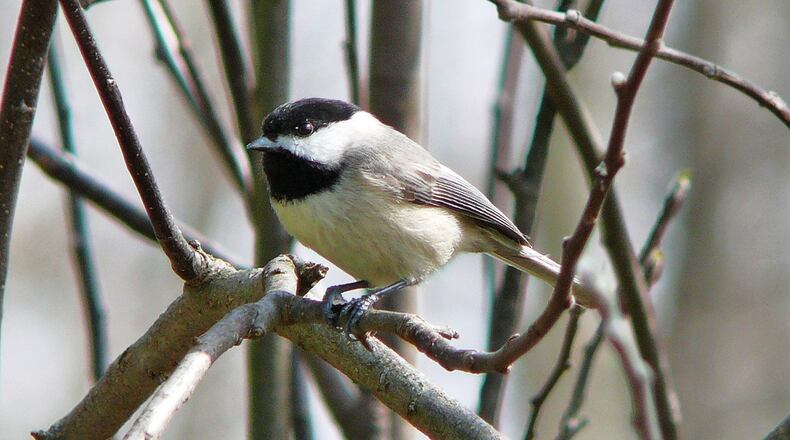Cold nights, chilly days, frosty mornings, perhaps a hint of snow — we groan when we hear such forecasts. Our jaunty little Carolina chickadees, though, seem to delight in such weather.
With their acrobatic antics and striking black-and-white colors that look like formal wear, chickadees entertain us as they stream to our feeders and flit about on frigid winter days.
Their cheerfulness, though, may belie their constant struggle to survive freezing temperatures. The chickadee is one of Georgia’s smallest birds, weighing in adulthood less than an ounce, about as much as an average letter. Its tiny heart races at an amazing 700 beats per minute; body temperature is about 105 degrees Fahrenheit.
To keep their inner fires burning, chickadees must eat a lot of food — equal to about a half to nearly all of their total body weight each day.
On cold days, they may use some of the food-derived energy to shiver and generate heat, which becomes trapped in their feathers. They also may fluff out their feathers to help hold internal heat. In addition, their black head feathers can absorb the sun’s warmth.
Chickadees and other birds also have remarkable adaptations to protect unfeathered legs and feet during winter: a protective scale-like covering and special veins and arteries that keep legs and feet warm.
On winter nights, chickadees can lower body temperatures by more than 15 degrees to slow metabolism and reduce energy demands. For extra warmth, they may snuggle with other chickadees and even with other small birds in tree cavities and birdhouses.
When not at feeders, chickadees often roam in mixed flocks with other small birds — titmice, downy woodpeckers, nuthatches and others — in search of wild food. Chickadees usually are the flock leaders.
Individual chickadees have one other trick — they may store seeds and other morsels in secret caches and retrieve them to eat later.
But even with all of these strategies, as much as 40 percent of chickadees may not survive a harsh winter.
IN THE SKY: From David Dundee, Tellus Science Museum astronomer: The moon will be first quarter on Wednesday. Mercury, Venus and Saturn are low in the east just before sunrise. Jupiter and Mars rise out of the east just after midnight.
About the Author




